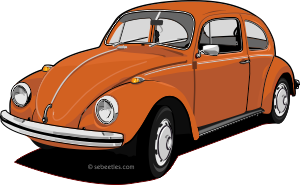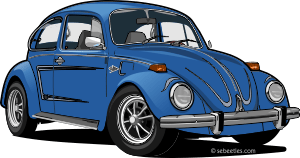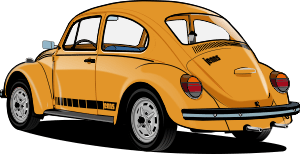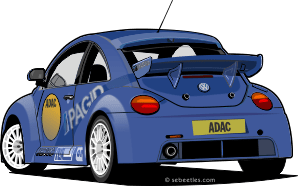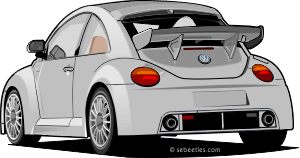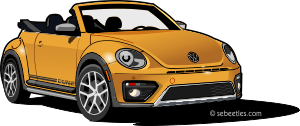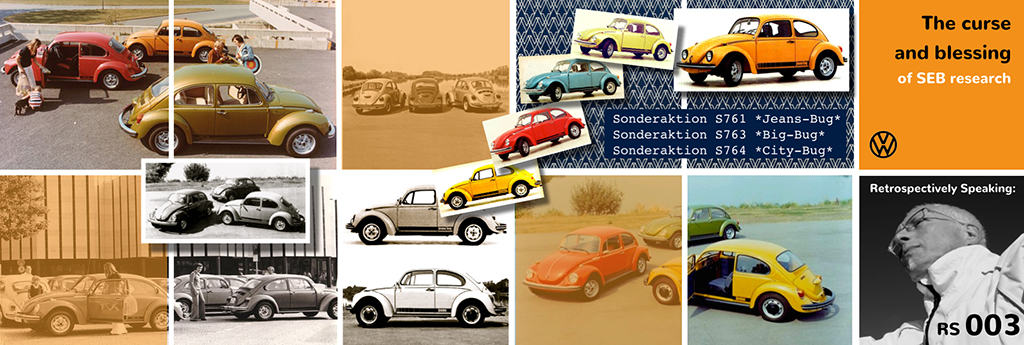
Retrospectively Speaking: The curse and blessing of SEB research.
I have often found that when I am doing SEB research and following one thread of investigation I stumble over other threads or coincidences that cross the main trail of evidence at tangents. Distractingly these other threads, or coincidences, not infrequently make my thought process sharpen up with the realisation that I have stumbled over another theme, or ambiguity, that is in need of investigation in order to be able to make an accurate, definitive, record of the subject.
Here is a case in point: Whilst digging around on the subject of the Lux’ trim 1303 SEBs for the RS002 column I noticed an intriguing conundrum. It seems to me that Volkswagen went through a series of uncertain thoughts about the final form of the S761Jeans (I). This is, very unusually , evident in some of the photos that are in circulation from that period. I say unusually because Volkswagen press photographs that did get released in the 1950’s and 1960’s were renowned for technical and authentic representational accuracy (“Work Exhibition1. Photographs from the Volkswagen Plant 1948-1974” Volkswagen AG, Wolfsburg 2006, ISBN 3-935112-26-2).
By the 1970’s increasing model range expansion and market diversification according to importers requirements saw a rise in the examples of retouched photographs in brochure artwork. This situation was compounded by the constant pressures within Volkswagen AG to economise under the increasingly difficult financial crisis of the mid 1970’s.
It is no secret that I find the black trimmed SEBs, and the four European Jeans series Beetles in particular (S761, S714, S716 and S744) especially appealing. Implicit in that appeal is an interest in the original Jeans Beetle launch in the Autumn 1973. That launch was a three model affair. The Jeans S761 sharing the spotlight with two of the models that I was researching for the Lux’ 1303 RS column that together made up the trio of Beetles in the Käfer der Käufer” Edition
In addition to the now familiar press release photos taken in the outdoors in Wolfsburg city and alongside a canal (which I have always assumed to be the Mittelland Canal, or one of its tributaries) studio photos of Jeans Beetle were taken.
The usual purpose of Volkswagen studio photos being not only to provide official press release images but also to provide fully document controlled input into sales brochures and other literature such as vehicle handbooks. The studio photos of the early pre-production Jeans, City and Big Beetles give the impression of having been intended for sales brochure use. There are however anomalies between some of them.
We also have anomalies between the Volkswagen list of “S” models (“Sonderverkaufsaktion” or “Sonderaktion” meaning , literally, “Special sales deal” or “Promotions” respectively) from the mid 1970’s and post-launch identities. The list suggests that the original identity of S761 Jeans, S 763 Big’ and S764 City’ were all “Sonderaktion *…-Bug*” This is supported by studio photographs of prototype Jeans Beetles carrying “jeans bug” side decals. The vehicles(s) in those images is(are) fitted with 4.5Jx15 Lemmerz “GT” sports wheels yet some of the canal side photos show a Jeans Beetle with series production “jeans” only side stripe decals and standard wheels with plain black hubcaps. Then finally we have photographs with the Jeans Beetle in series production form with “jeans” only side decals and Lemmerz “GT” Sports wheels.
Contemporary studio photographs also exist of 1303 City and Big Beetles decorated with “bug” side stripe decals. Unlike the Jeans’ and the Big’ the City went through not one, but two, prototype stages. The first concept was that it should be a *Lady Bug* with the wording on the side strip decal in an italic style font and the interior accented with checkered pattern cloth seat facings. A red and a Ravenna Green version of this prototype are understood to have been produced. The second concept was the *City Bug* with the stripped pattern cloth seat facings.
All three models in the trio had the word “bug” changed in their description to “Beetle” by the time the cars were launched. The final version side stripe decals were modified to omit the word “bug”.
The Lady-Bug / City Beetle had and interesting twist to it in that, in terms of market sectors, the City’ was, true to it’s name, intended as a well appointed urban Beetle with a distinct gender market leaning. Peter Noad a journalist well known over several decades for his contributions to all the magazines in the UK that catered for VW owners (and several that catered for tuning, autocross and the like) included these comments in his report from the 1973 Frankfurt Motor Show published in “SAFER MOTORING” Magazine: “ The City Beetle, designed particularly for women, also has special seat coverings, in this case with stripped centre panels in red, blue or green. Carpet, radio, heated back window and sports wheels are also included, plus inertial reel seat belts, and there is a pocket for a parking disc on the sun-visor”. Comments that by today’s standards are, in part, seen to be rather gender biased but they did reflect the general theme of the press launch at the time and Volkswagen’s perceptions about marketing target audiences at the time.
In the end the marketing undercurrent was less overt than the original *Lady Bug* name would have implied – but only just. Given then that the 1200cc Jeans Beetle was targeted at the young (including young at heart and trendy/fashion conscious) buyers and the 1300cc City Beetle targeted at female buyers the question has to be asked was the 1600cc Big Beetle therefore aimed at male buyers – originally conceived as the *Gentlemen-Bug*? We shall never know. More probably it was simply a further Sports Bug following on from the success of the “Sportkäfer” SEB marketed earlier in that same year of 1973.
The general marketing themes of the “Käfer der Käufer” Edition broadly repeated those used by Volkswagen earlier in 1973 in the “Drei Käfer auf Extra-Tour” Edition of which the “Sportkäfer” was the top line model in a trio of Beetles comprising of a spartan 1200cc, luxe 1300cc and sports 1600cc. The original Press photo for the “Drei Käfer auf Extra-Tour” trio showed the three Beetles with three female companions attired to emphasise the young, luxe and sports themes.
Staying with the matter of press photos what I do know is that photo-shoots for press photographs mean that there are many more images stored away in archives than eventually get released for press photo packs. There is a constant frustration with my ongoing work for SEBeetles because the Wolfsburg archives must have (lots) of unseen SEB images in them but which Volkswagen will just not release into the daylight of public sighting. Images that would give us so much more finite information about the little know SEBs and more details about the SEBs we already have a fairly knowledgable account of.
During the 1980’s Volkswagen AG, Volkswagen of America and Volkswagen of Canada and VW importers in other countries were always very helpful in their responses to my requests for photographs and information when I was researching magazine articles. It is sad to reflect that, today, a totally reverse ethos is all pervading. I am no longer afforded that sort of help: this is nothing personal. Volkswagen press photographs from the 1970’s and historic information are not supplied from the Wolfsburg archives for such projects as making the listings in SEBeetles as complete as possible because it is, apparently, company policy not to supply material for display on websites or social media.
Occasional “new” old material does surface and it was a joy to see the rear view photo of the Jeans/City/Big trio from the canal side photo-shoot in the excellent “Käfer spezial” article in Käfer Revue 1/2015. The image was one that I had certainly not seen previously. Interestingly the colour cast of the photograph as reproduced in Käfer Revue makes the L95C Moosgrün-metallic Big Beetle appear more like L96N Vipergrün-metallic. This raises another discussion point: that of the context of photographic rendition of colour and the variations in it. This is influenced by a whole variety of factors including the camera exposure settings and lens aberration together with the type of film used, it’s ASA (ISO) rating, format and quality of film and processing used for the original images.
Then there are the issues of the ageing of old colour prints, the process of colour reproduction during printing etc., All this is compounded by some paint colours being notoriously difficult to reproduced in an authentic hue photographically. Two Volkswagen colours spring readily to mind in this respect from personal experience. The first being the classic 1960’s L360 Seeblau/Sea Blue which so often comes out looking much darker and very much like VW Blue. The other is L95C Moosgrün-metallic/Moss Green Metallic!
After inspection of these photographs of the Jeans/City/Big Beetle launch in general circulation my initial thoughts were that, if we set aside the studio images of the pre-production cars, there were two sets of images taken on different occasions. The first set taken by the canal-side with the Jeans Beetle wearing black hubcaps and the second set taken in Wolfsburg itself with a supporting cast of people recognisable as common to both photographs. All three cars in this second set of images appear to be series production versions and whilst, in the colour photo L95C Moosgrün-metallic and L31M Ibizarot look reasonably true to life I remain uncertain about the Jeans Beetle – is it really painted in L16M Tunisgelb?.
I did however have a niggling subconscious feeling that I had seen at least one other image of the Jeans/City/Big Beetle trio by the canal-side that was not included in the images that I had collected together during the research process. This hunch was proved correct and embarrassingly so. Whilst, undertaking research for a future ‘Retrospectively Speaking” column I was revisiting the Volkswagen Audi CAR Magazine series from 1983 that I co-authored with Chris Barber only to notice that it included an image that bridged between the previously assumed two different sets of photos. It illustrated a canal-side grouping of the trio very similar in composition to one of the photographs with the Jeans wearing black hubcaps but showing a Jeans with Lemmerz “GT” Sports wheels.
This has raised more questions: did Volkswagen intend that for some markets at least the first series Jeans Beetle – the S761 Jeans ’74 (I) should be delivered with standard road wheel /plain black hubcaps and with Lemmerz wheels as optional? Where any examples delivered with standard wheel and black hubcaps to either “inland” or “export” markets? Or did importers just decide to bulk order S761 Jeans models with the optional Lemmerz wheels so as to reinforce the visual connection with the Big (and City) Beetles? One thing is certain: – all the brochures that I have seen so far that are contemporary with the Jean/Big launch have photographs of the Lemmerz wheels being included in the promotional package.
By the close of 2015 I thought that we had started to get answers to most of the outstanding questions about European SEB production details. Now in early spring 2016 my list of questions seems longer than the list I had way back in 1983!
It seems to me that the more we know the more we don’t know! Asking questions looks as if it is going to be a consistent theme of the next few “Retrospectively Speaking” columns in SEBeetles.
What has impressed me very much over the past twelve months though is how effective modern “Social Media” can be for exchanging detail research information at an international level. It makes possible the bringing together of knowledge of and enthusiasm/passion for a subject in a very easily accessible way. A dimension of communication and information sharing that we just never could have dreamed possible in 1983.
So I am content to close this particular column with just just one (more) question: How many other different press photo/archive images from the Jeans/City/Big Beetle press launch exist in pubic circulation?
A postscript with a question about how many previously unseen photographs still lie in Volkswagen AG’s archives is one that I shall defer on until another day ….
Appreciation: My grateful thanks to fellow SEB enthusiasts Jan Walter and Jean Michel Renaux for their encouragement, help and information. This help, which has prompted several revisions to my draft text, has enabled this column to be a more extensive Retrospective’ than I had originally envisaged was possible…
Copyright Stephen Paul Hardy,
Dorset, England. 28th March 2016
Further reading on this website:
The individual profiles for the Jeans(I), City and Big SEBs each include photos of prototype models carrying “….bug” wording on the side stripe decal.
[fbls]
